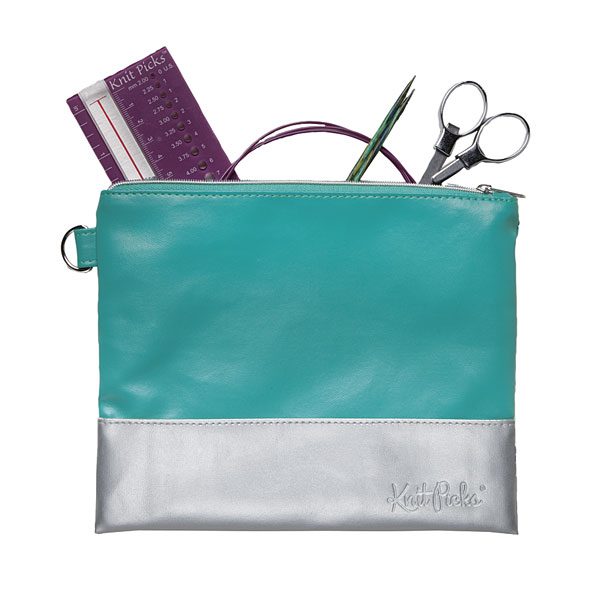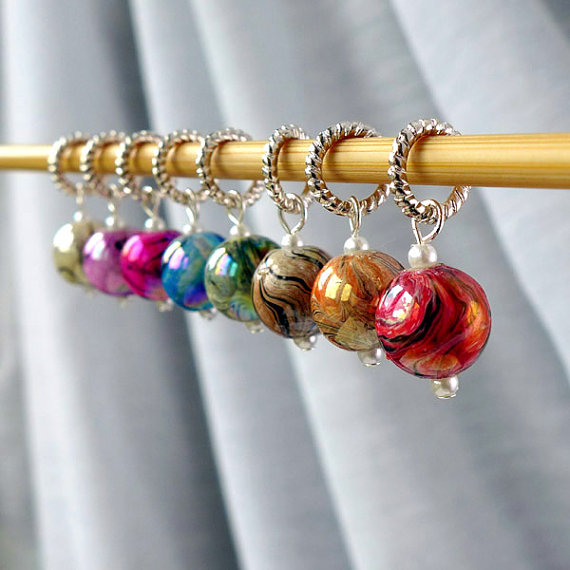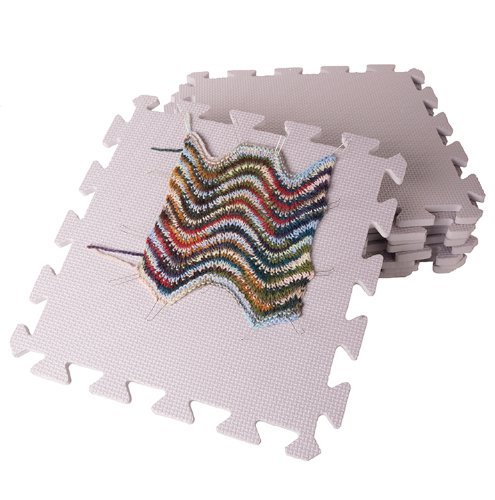When I started knitting over 14 years ago, I thought all you needed was a skein of yarn and some needles. While this is basically true, there are many other items that can make life a whole lot easier. From weaving in ends to keeping track of where you are in a complicated stitch pattern,
When I started knitting over 14 years ago, I thought all you needed was a skein of yarn and some needles. While this is basically true, there are many other items that can make life a whole lot easier. From weaving in ends to keeping track of where you are in a complicated stitch pattern, today we’ll look at the most essential items to have in your knitting kit.
Tapestry Needle
Besides the yarn and knitting needles, the tool I find myself reaching for most often is a tapestry (also called a yarn) needle. Think of a sewing needle on steroids, but without the sharp tip. A tapestry needle is designed for yarn and has a very large eye to make it easier to use with thick yarn. Also, a tapestry needle is not sharp. You do not want it to split your yarns, just to help you weave the ends in and out, or to glide through the stitches when seaming. You can get tapestry needles in plastic or metal. I recommend metal because I have found in my experience that they glide through most types of yarn much better than a plastic one, which sometimes catches in some fibers. Both types are inexpensive and can be found anywhere yarn is sold.
Measuring Tools
Many knitters have a measuring tape on hand, and this can be handy, but for most smaller projects a standard ruler can be used, too. Most of the time I use a ruler I keep near my knitting supplies for checking gauge and measuring the length or width of a project. One of the things I do like and keep around is a retractable measuring tape. This way I don’t have to roll it back up every time I use it! I just push a button and it zooms closed. Just beware if you have small children or cats – it makes a great toy and might get lost or stolen. Or maybe even broken. Just speaking from experience here!
Stitch Markers
If you are working in the round or working a complicated pattern, stitch markers can help save your sanity. You can get two types of stitch markers: closed rings designed for knitting needles that are slipped from one needle to the next and open stitch markers, sometimes called split-ring or locking stitch markers. I have both in my knitting kit because they are inexpensive and have very different uses. The closed stitch markers are used more often in knitting. If you are going to buy one set, I would recommend either those or a set of split-ring markers that can either function like a closed stitch marker or clip onto a particular stitch. You can use stitch markers to mark the beginning of a round, mark a certain number of stitches, mark an area to increase or decrease, and more. Even if you are not comfortable enough in your skill set to think you will need these, they are good to have on hand.
Blocking Board
Blocking your projects makes them look more even and most professionals would say it is a must for any hand knit. This process uses moisture and sometimes heat to shape a hand knit item so that it looks and fits better. I find that my pieces lay better and are more symmetrical when I block them, so it is a must for me. Even if the yarn doesn’t change that much during blocking (and let’s be honest, some really don’t) you never really know what the yarn is going to do after blocking so it is an important step. There are many different blocking boards out there on the market and also lots of DIY options, too. It doesn’t really matter how much money you spend on the equipment as long as it gets the job done. I have a blocking board created for quilting that has inches both for length and width and this saves me a lot of time when I’m pinning my projects down.
Spray Bottle
Another useful blocking item is a spray bottle. Most yarns do well with wet blocking (check them using your gauge swatch if you are ever unsure!) and the easiest way for me to wet them down is to spray them with plain water. You can get inexpensive spray bottles at several places for around a dollar, so it is not too much of an investment to make your finished knitting look more professional.
Straight Pins
Whether you choose T-pins, ballpoint pins, or quilting pins, you should have some sort of stright pins in your knitting kit if you plan on blocking. These pins will be used to hold the knitted pieces to your blocking board in the correct dimensions. WIthout pins a blocking board and spray bottle are useless.
So there you have it: the basic items any knitter should have in their knitting kit. As you get more advanced you may find yourself adding a few items, such as stitch holders, bobbins if you get into colorwork, needle caps, or row counters, but these items are really not necessary for most knitters. I thought I had to have all these types of things and even though they are in my knitting kit, I don’t ever get them out. The items on this list of essentials can be picked up at any craft store or local department store with a craft department. They are inexpensive and will help make your knitting life a lot easier.

